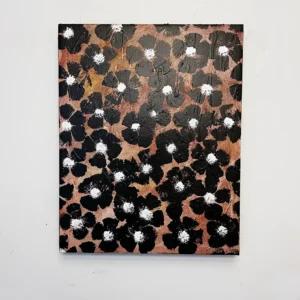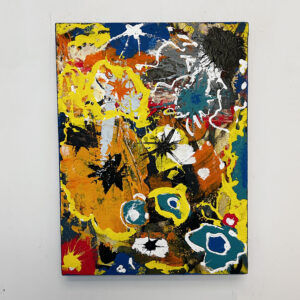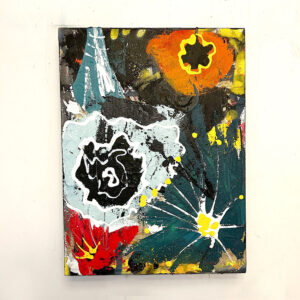Pittsburgh’s contemporary art scene has evolved dramatically over the years, reflecting the city’s rich history, diverse culture, and innovative spirit. From its industrial roots to its current status as a hub for cutting-edge creativity, Pittsburgh has nurtured a vibrant community of artists who push boundaries and redefine artistic expression. In this article, we explore the evolution of contemporary art in Pittsburgh, key milestones, influential artists, and the factors that have shaped this dynamic journey.
Historical Context and Early Influences
Pittsburgh’s industrial heritage has had a profound impact on its cultural and artistic development. In the late 19th and early 20th centuries, the city was known for its steel production and bustling industrial economy. This industrial backdrop provided both inspiration and subject matter for early artists, who often depicted scenes of labor, industry, and urban life.
One of the earliest and most influential art institutions in Pittsburgh is the Carnegie Museum of Art, founded in 1895 by industrialist Andrew Carnegie. The museum’s focus on contemporary art and its annual Carnegie International exhibition have played a crucial role in introducing new artistic movements and trends to the city. The museum’s collection and exhibitions have provided a platform for both local and international artists, fostering a rich dialogue between Pittsburgh and the global art community.
The Rise of the Pittsburgh Art Scene
The mid-20th century saw significant growth in Pittsburgh’s art scene, with the emergence of new galleries, artist collectives, and cultural institutions. This period was marked by a growing interest in modern and abstract art, influenced by broader national and international movements.
One of the key figures in this era was Andy Warhol, a Pittsburgh native who became a leading figure in the pop art movement. Warhol’s work, characterized by its bold use of color and commercial imagery, challenged traditional notions of art and established Pittsburgh as a birthplace of innovative artistic talent. The Andy Warhol Museum, opened in 1994, continues to celebrate his legacy and influence, housing an extensive collection of his works and serving as a center for contemporary art and culture.
The Emergence of Contemporary Art Spaces
In recent decades, Pittsburgh has seen the rise of numerous contemporary art spaces that have further energized the city’s cultural landscape. These spaces provide vital support for emerging and established artists, offering opportunities for exhibition, collaboration, and community engagement.
The Mattress Factory
The Mattress Factory, founded in 1977, is one of Pittsburgh’s most renowned contemporary art museums. Located in the North Side, the museum is dedicated to site-specific installations and immersive experiences. The Mattress Factory has hosted works by prominent artists such as Yayoi Kusama, James Turrell, and Greer Lankton, providing a platform for innovative and experimental art.
The museum’s focus on site-specific installations allows artists to transform entire rooms, creating immersive environments that challenge and engage viewers. The Mattress Factory’s commitment to cutting-edge art has made it a key player in Pittsburgh’s contemporary art scene.
SPACE Gallery
SPACE Gallery, operated by the Pittsburgh Cultural Trust, is a downtown venue that showcases contemporary art exhibitions. The gallery’s programming spans a wide range of mediums and styles, reflecting the diversity of contemporary art. SPACE Gallery’s exhibitions often address social and political themes, providing a platform for critical dialogue and exploration.
By presenting work from both local and international artists, SPACE Gallery fosters a dynamic exchange of ideas and contributes to Pittsburgh’s cultural vibrancy. The gallery’s accessible location and commitment to public engagement make it an important venue for contemporary art in the city.
The Brew House Association
The Brew House Association, located in the South Side, is a nonprofit organization that supports artists through studio spaces, exhibitions, and residency programs. Housed in a former brewery, the association provides affordable studios and resources for artists to develop their practice.
The Brew House Association’s exhibition space, the Brew House Gallery, showcases contemporary art exhibitions that highlight the work of emerging and mid-career artists. The organization’s focus on supporting artists at various stages of their careers contributes to the sustainability and growth of Pittsburgh’s art community.
Influential Contemporary Artists
Pittsburgh is home to a diverse and talented community of contemporary artists who are making significant contributions to the field. These artists draw on the city’s history, culture, and environment to create works that resonate both locally and globally.
Thaddeus Mosley
Thaddeus Mosley is a celebrated sculptor known for his abstract wood sculptures. Using locally sourced hardwoods, Mosley creates dynamic forms that evoke movement and organic growth. His work is deeply connected to the natural world and reflects his mastery of traditional woodworking techniques.
Mosley’s sculptures have been exhibited in major institutions, including the Carnegie Museum of Art and the Whitney Museum of American Art. His contributions to contemporary sculpture and his commitment to his craft have earned him recognition as one of Pittsburgh’s most influential artists.
LaToya Ruby Frazier
LaToya Ruby Frazier is a photographer and video artist whose work addresses themes of race, class, and environmental justice. Frazier’s powerful images document the impact of industrial decline on her hometown of Braddock, Pennsylvania, and highlight the resilience of its residents.
Frazier’s work has been exhibited internationally and has received numerous awards, including a MacArthur Fellowship. Her commitment to social justice and her ability to tell compelling, personal stories through her art have made her a significant figure in contemporary photography.
The Role of Education and Institutions
Educational institutions and art organizations play a crucial role in supporting and nurturing contemporary art in Pittsburgh. Carnegie Mellon University (CMU) and the University of Pittsburgh offer robust art programs that attract talented students and faculty from around the world. These institutions provide resources, mentorship, and opportunities for experimentation and collaboration.
The Pittsburgh Center for Arts & Media (PCA&M) is another key organization that supports the local art community. PCA&M offers classes, workshops, and exhibitions that engage artists and the public in a wide range of creative practices. The organization’s commitment to accessibility and community engagement helps to democratize art and foster a vibrant cultural ecosystem.
Conclusion
The evolution of contemporary art in Pittsburgh is a testament to the city’s resilience, creativity, and community spirit. From its industrial roots to its current status as a cultural hub, Pittsburgh has nurtured a dynamic and diverse art scene that continues to innovate and inspire. Through the efforts of artists, institutions, and organizations, contemporary art in Pittsburgh reflects the city’s unique identity and contributes to its ongoing cultural renaissance.
As Pittsburgh looks to the future, the continued support and development of contemporary art will be essential in shaping the city’s cultural landscape. By celebrating its artistic heritage and fostering new talent, Pittsburgh can ensure that its art scene remains vibrant, inclusive, and forward-thinking.


